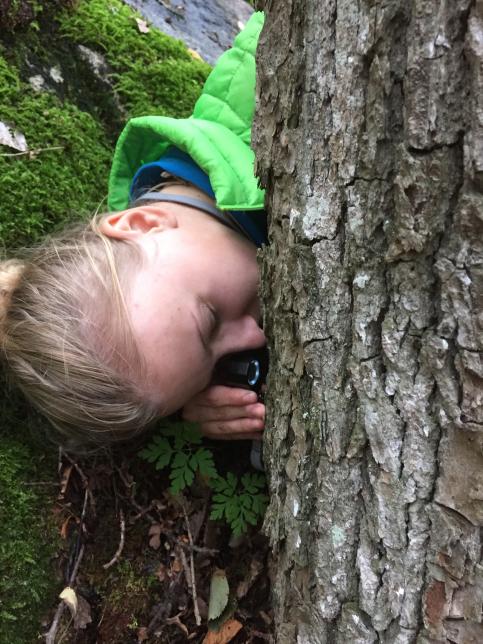Method
Study sites
This study included two study sites, the peninsula Billingen (Strömsholm) and the island of Aggarön, outside of Västerås, Sweden. Both sites have a history of being pastures and meadows with high biological values, and are now areas designated for conservation.
Both sites have reference plots where nothing has been done as well as restoration plots where conservation thinning has been conducted.
Field method

In 2010-2011, all trees above 10 cm in diameter were surveyed for red-listed lichens with a led-light loupe up to 2 meter up the stem. In this first survey, 652 trees were found hosting 24 species of red-listed epiphytic lichens. For the aim of this study a second survey was conducted in 2015. The trees that had findings in the first survey were searched in the same manner once again. All of the findings were determined in the field, along with a number of other variables.
Measured variables:
The lichen abundance and bark loss coverage were measured using a see-through plastic film with a marked grid of cm2 -squares.
The light influx was measured by facing south from the tree and in a 45° angle arch, going from west to east, assessing how many percentages of the arch fall into each of the three categories (No light, 50% light influx and full light influx). A weighted mean light influx value was then calculated for each tree.
Amount of removed biomass was measured by measuring 15 meters to each side of the surveyed tree, creating a circle of 30 meters in diameter. In each circle the diameter of every stump and dead tree was measured and then recalculated into the surface area. The total amount of removed biomass was then calculated. The dead trees were included as trees that die and/or fall over create the same effect as the human-made effect created by thinning.
For elms and ashes the health status of the tree was noted as one of the four categories (healthy, <50% affected, >50% affected or dead). Trees that showed no sign of producing foliage were considered dead.
Responsible for this page:
Director of undergraduate studies Biology
Last updated:
06/15/16
